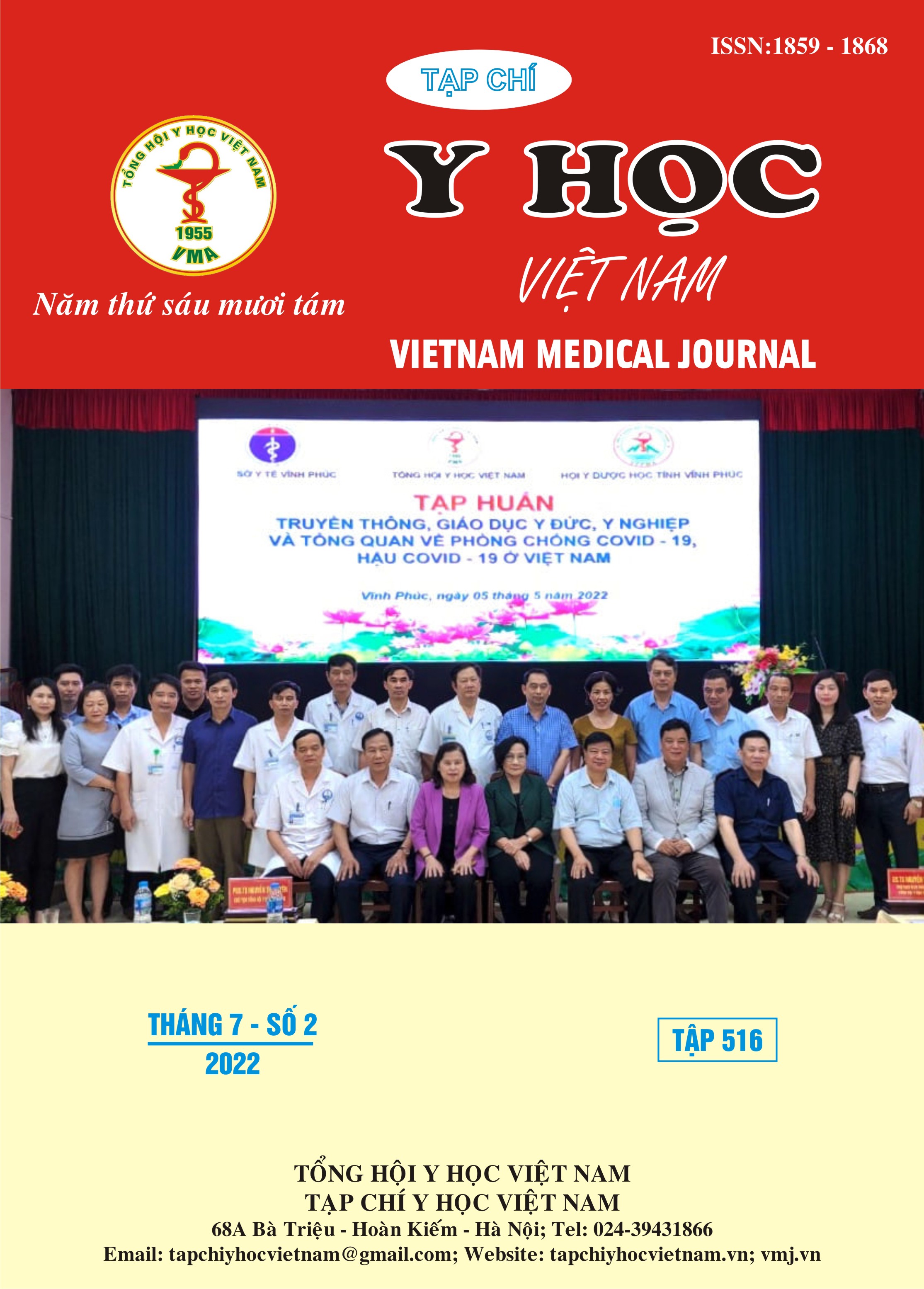EVALUATION OF CLINICAL AND SUBCLINICAL CHARACTERISTICS AND FACTORS AFFECTING THE RESULTS OF THORACOCENTESIS BY PUSH METHOD ON ELDERLY PEOPLE AT THE NATIONAL GERIATRIC HOSPITAL
Main Article Content
Abstract
Objective: Evaluation of clinical and subclinical characteristics of patients undergoing gastric bypass by push method and determining some factors related to severe complications and death in 90 days after laparotomy. Subjects and methods: Descriptive study, longitudinal follow-up. Take 39 patients with indications for gastric bypass by push method. After catheterization, the patient was monitored and evaluated for influencing factors for 90 days or until death. Results: The proportion of men was more than 61.54%, and the average age in the study was 79.1 ± 8.2. The most common gastrointestinal injury was an esophageal ulcer, accounting for 35/39 patients. Esophagitis and GERD were seen in 27/39 patients. The group with severe complications had a BMI of 14.24 ± 2.85, 20, ± 2.61 lower than the group without Hemoglobin index was 92.0 ± 25.62 () compared to 105.8 ± 2.91 in the unaffected group. The albumin level was 24.9 ± 5.88 compared with 31.11 ± 4.72 in the unaffected group. Conclusion: Patients with gastric bypass at Geriatric Hospital have a higher proportion of men than women. The most common lesions in patients with indications for open catheterization are esophageal ulcers, esophagitis, and GERD. The factors identified as related to the serious complications of the patient are BMI, hemoglobin, albumin, and platelet count at the time of the procedure.
Article Details
Keywords
PEG, gastrostomy, by Sumitomo Bakelite – Japan, National geriatric Hospital
References
2. Smith BM, Perring P, Engoren M, Sferra JJ. Hospital and long-term outcome after percutaneous endoscopic gastrostomy. Surg Endosc Other Interv Tech. 2008;22(1):74-80. doi:10.1007/s00464-007-9372-z
3. Ben-Menachem T, Decker GA, Early DS, et al. Adverse events of upper GIendoscopy. Gastrointest Endosc. 2012;76(4):707-718. Accessed July 2, 2021. https://pubmed.ncbi.nlm.nih.gov/22985638/
4. Grant DG, Bradley PT, Pothier DD, et al. Complications following gastrostomy tube insertion in patients with head and neck cancer: A prospective multi-institution study, systematic review and meta-analysis. Clin Otolaryngol. 2009; 34(2):103-112. doi:10.1111/j.1749-4486. 2009 .01889.x
5. Lucendo AJ, Sánchez-Casanueva T, Redondo O, Tenias JM, Arias Á. Risk of bleeding in patients undergoing percutaneous endoscopic gastrotrostomy (PEG) tube insertion under antiplatelet therapy: A systematic review with a meta-analysis. Rev Esp Enfermedades Dig. 2015;107(3):128-136.
6. Mahawongkajit P, Techagumpuch A, Limpavitayaporn P, et al. Comparison of Introducer Percutaneous Endoscopic Gastrostomy with Open Gastrostomy in Advanced Esophageal Cancer Patients. Dysphagia. 2020;35(1):117-120. doi:10.1007/s00455-019-10017-w


